Corporate Responsibility & Green Branding: Electronic Recycling in 2025
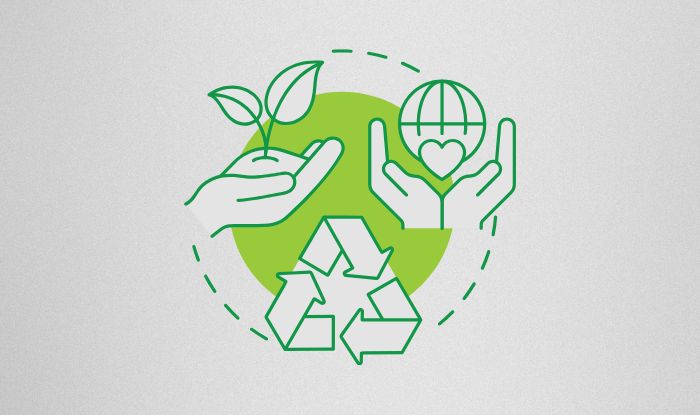
E-waste is no longer just a pile of old gadgets gathering dust; in 2025, it will be a pressing business problem. Laptops and IoT devices are turning over faster than ever, and so is the pressure to deal with them responsibly.
Now, recycling isn’t just a cool word companies can drop occasionally. It is now a marker of responsibility; companies are seen, trusted, and remembered for the way they recycle, and if they do.
Businesses should take this opportunity to demonstrate their recycling efforts and that they can be both responsible and profitable. Consumers today are quick to call out greenwashing, and if you get it right, rest assured that your business will remain future-proof.
The Importance of Electronic Recycling in 2025
Electronic recycling has moved on from being a buzzword. It is now the center of how businesses tackle climate goals, appeal to consumers, and manage their resources. Here are some solid reasons why electronic recycling is the turning point for businesses in 2025.
1. Environmental & Climate Impact
If you think that electronics just vanish when you toss them out, then you are badly mistaken. These tossed-out laptops leak toxins into the environment, like lead and mercury.
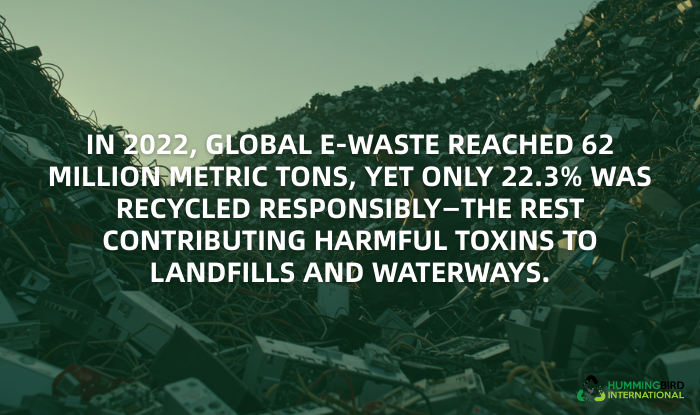
In 2022, the world generated 62 million metric tons of e-waste, with only 22.3% properly recycled, leaving hazardous materials to pollute landfills and waterways. But with responsible recycling, you can prevent that.
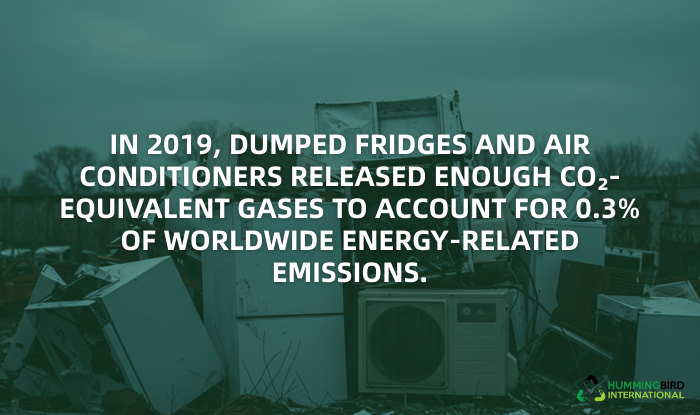
Beyond pollution, improper disposal is one of the biggest contributors to climate change. In 2019, discarded fridges and air conditioners alone emitted CO₂ equivalents equal to 0.3% of global energy-related emissions. Recovering materials and eliminating the need for energy-intensive mining and manufacturing can easily reduce these emissions.
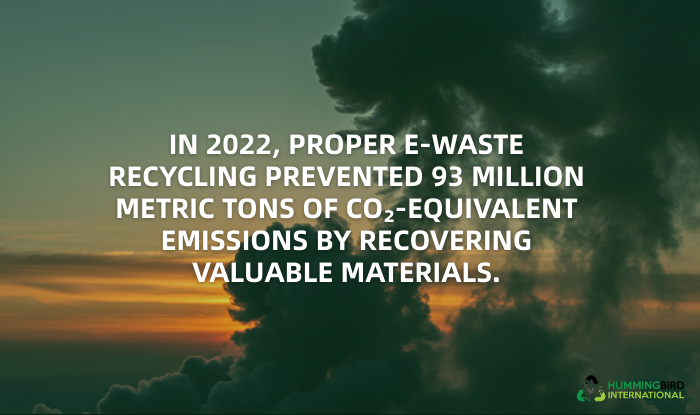
In 2022, responsible e-waste processing avoided 93 million metric tons of CO₂-equivalent emissions through material recovery. Thus, it is possible for businesses to slash their carbon footprint.
2. Resource Conversation
It is unpopular knowledge, but each smartphone and laptop contains many rare earth metals and precious materials. When you recover them, you won’t have to mine for more, saving the planet from further resource extraction scars. By 2030, the annual e-waste generation will rise to 82 million tonnes, so we must act quickly.
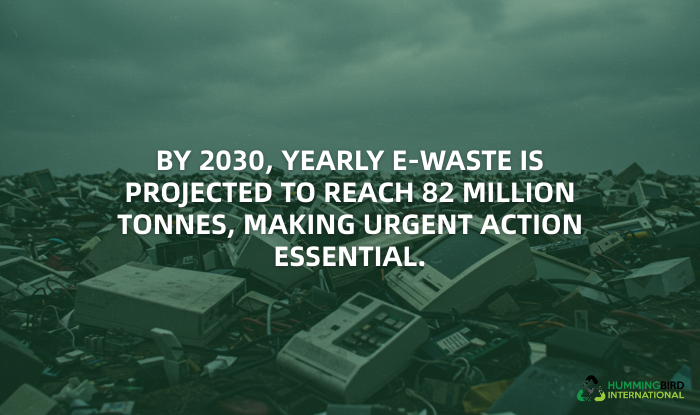
For businesses, it’s not just lovely to have a resource recovery but a smart business move.
3. Pressure from Regulatory Agencies
Governments aren’t looking the other way anymore; instead, the EU’s WEEE Directive, U.S. state-level laws, and Japan’s recycling mandates are shifting accountability back to businesses. Most of these policies run through Extended Producer Responsibility (EPR) programs, which put the burden of safe disposal back on manufacturers.
And if you ignore these policies, the cost is heavy. You will have to pay fines, face legal risks and damage your reputation along the way.
4. Consumer Expectations
Consumers today aren’t easy to fool and know just how much power they have. They expect brands to prove what they are doing for the planet and are not just trying to greenwash. The European Commission surveyed 42% of the cases to find that green claims were false or exaggerated to deceive.
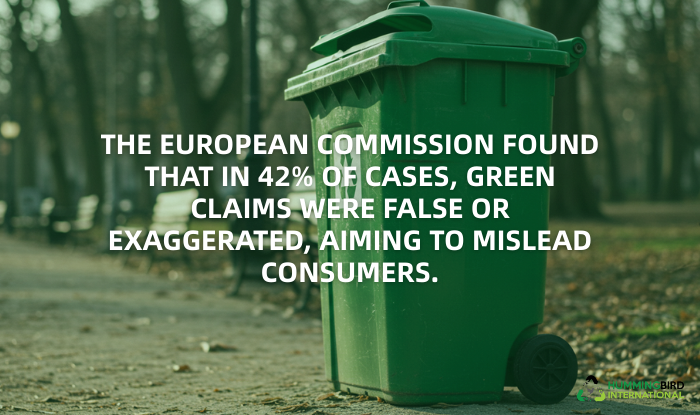
So, now consumers are asking for proof and actions that they can see, such as keeping recycling bins in stores, easy take-back programs, and transparent reports on where old electronics actually end up.
If businesses are not heedful, they will surely lose their businesses to competitors who are playing the long game and taking the right steps.
5. Economic Benefits
Don’t mistake sustainability for protecting the planet only; it also helps you protect your profits. Businesses today can make money from what they used to consider waste. If you recycle old electronics, you can return valuable resources like gold, silver, and copper into production.
This way, businesses can avoid landfill prices and remain the same from compliance penalties. Green, fair, and innovative companies will always recycle responsibly.
Strategies For E-Waste Management
We get it. You know why recycling is essential, but you need clear, actionable tips as a business. Here are strategies that can completely change the game of e-waste management and emerge at the top:
1. Take-Back Programs
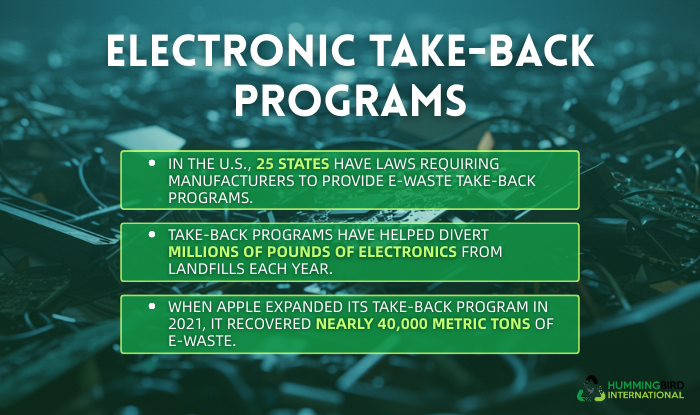
Corporate recycling is actively practiced through take-back programs, and Apple is the biggest example. Since the launch of iPhone 16, Trade-In sales have increased by almost 40%. After Apple, several similar programs have popped up across industries, where retailers offer discounts for returning appliances or store credit in exchange for old laptops.
But to make it a success, you have to make the trade-in as accessible as possible. Set up drop-off points in multiple locations and make it seamless so consumers can participate without any hassle.
2. Partner with Certified Recyclers
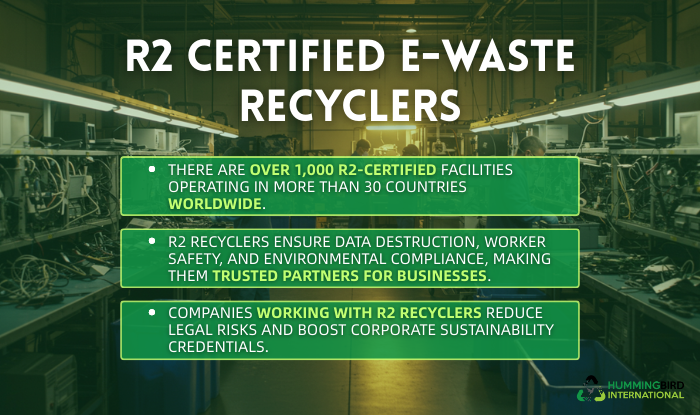
We cannot ignore the truth that less than 35% of the world’s e-waste is formally recycled, and the rest ends up in landfills or in unsafe locations, harming the environment and people. In 2022 alone, the world generated 62 million tonnes of e-waste, but only about 22% was documented correctly and recycled.
That’s why more businesses are choosing certified recycling partners. Companies like Hummingbird International are R2-certified disposal partners and make sure the electronics are handled safely and all valuable materials are recovered. Companies like Dell partner with R2 companies, and to date, their recycle program has recycled more than 635 million pounds of electronics. Take inspiration from Dell and partner with certified recyclers so they keep their end of their bargain.
3. Employee Engagement Initiatives
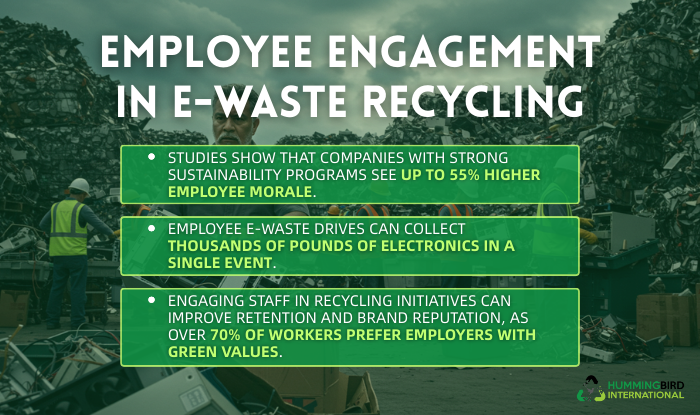
Charity starts at home, but 2025 recycling will begin at home. Tech companies can run internal e-waste drops where all employees can bring in gadgets from home and recycle them. The companies can offer incentives such as cash prizes or sustainability gift hampers in exchange. The idea is to motivate employees to dispose of old devices responsibly.
In addition, you can train your employees to handle the e-waste produced within the company. They can securely wipe the data before you send your devices to the recycler.
4. Circular Economy Models
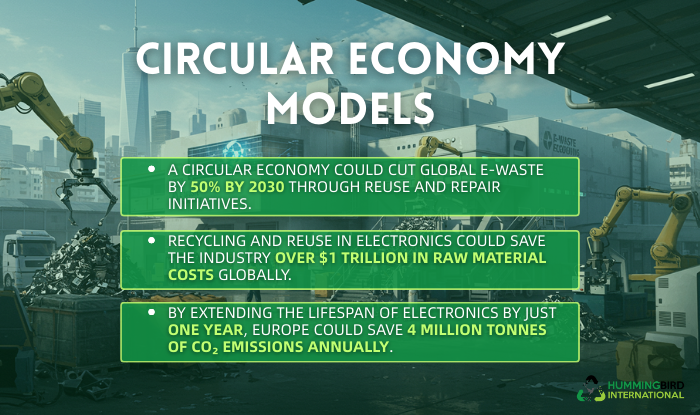
A make, sell, and discard economy does not work anymore. More and more companies are looking forward to a circular economy. Tech companies are designing products that can be repaired, reused, and refurbished.
Practice initiatives to help you participate in the circular economy and reduce emissions. Do not throw away a laptop just because its components are not working; repair it. When buying new tech, go for refurbished laptops so you don’t only save money but also contribute positively to the environment.
Green Branding- How To Do It Responsibly
Rather than just talking about it, brands need to make recycling a prominent part of their brand story. In 2025, you can’t just write flashy slogans and let them do the heavy lifting. Here are some easy ways to incorporate ‘green’ without the greenwashing.
• Step 1: Brand Reputation
Work on your brand reputation and give sustainable proof to your claims. The way you recycle can influence the way people talk about you, so don’t just publish ads, do these instead:
- Publish annual recycling results on your website and social media.
- Showcase partnerships with certified recyclers and name them.
- Train customer service reps to answer sustainability questions clearly with access to proof, like certifications.
• Step 2: Marketing Campaigns
Eco buzzwords might have worked a decade back, but now each campaign you design should come with proof, numerical details, and an impact. Don’t just say we are going green, but actually show it:
- Back every green claim with solid data (e.g., “40% of devices refurbished in 2024”).
- Use real stories to highlight impact, like showing communities that benefited from tech donations.
- Cut jargon and explain your efforts in simple, clear language.
• Step 3: Sustainability Certifications
Certifications are the best proof that you actually do what you say you’ll do. Use them to gain trust and establish authority in what you do and how well you do it. These steps can help:
- Get your products certified with EPEAT or Energy Star.
- Work only with R2 or e-Stewards certified recycling partners.
- Display these certifications on packaging, your website, and marketing campaigns.
• Step 4: Transparency Reporting
Being honest in your efforts is the best way to approach recycling. Vague claims, no matter how shiny, will always fall through, so stay honest even if you’re just beginning your journey. Here’s how you can start:
- Publish short, quarterly sustainability reports that are easy to read.
- Use dashboards, visuals, or infographics to make the data simple.
- Share both wins and struggles openly, along with how you fix them.
• Step 5: Consumer Engagement
Consumers are a great way to propel your initiative forward, and the newer generation, more importantly, Gen Z, would appreciate participating in a recycling initiative. Here are some ideas you can go off of:
- Offer trade-in discounts or loyalty points when old devices are returned.
- Place easy-to-use drop-off bins in stores or offer courier pick-ups.
- Start challenges to promote recycling.
• Step 6: Competitive Advantage
Being green helps you stand out from the competition. If you want consumers to gravitate towards you, then implement green initiatives to show them how you are making a difference and being a pioneer in your industry. Try these:
- Showcase recycling initiatives in investor pitches to prove future readiness.
- Use sustainability efforts as part of your hiring campaigns to attract top talent.
- Lean into eco-friendly branding to enter stricter, profitable green markets like the EU.
E-Waste Recycling Challenges For Businesses & How To Turn Them Into Opportunities
E-waste recycling is not easy, and you may face many troubles along the way, but that should not stop you from practicing green initiatives. We have devised plausible solutions to such challenges to help you adopt electronic recycling easily.
| Challenge | The Problem | The Opportunity |
| Volume of Waste | Devices are being tossed out faster than recycling systems can keep up. By 2030, global e-waste could reach 82 million tonnes. | Don’t see it as a burden, but see it as proof of responsibility. Scale your take-back programs, open more collection points, and use complex numbers to show your impact. |
| Consumer Awareness | Many people don’t fully get e-waste or simply don’t trust recycling claims, so they don’t participate. | Education can also double as branding. Show real before-and-after stories, highlight carbon savings, and make recycling visible enough that people want to join in. |
| Cost Barriers | Certified recycling, safe transport, and refurbishing can feel like just another bill on the desk. | Flip the script because it’s an investment. Recover precious metals, cut compliance fines, and even build revenue streams through refurbished and resale models. |
| Data Security Concerns | Businesses often hoard devices out of fear that recycling will lead to data leaks. This only creates more waste. | Work with certified recyclers who guarantee secure data wiping and destruction. Then, market this as a trust-building promise that sets you apart. |
Conclusion
Recycling in 2025 isn’t an option anymore; it’s a responsibility. How your business handles its old tech is how people will measure your credibility. Customers, investors, and even regulators are watching. And they’ll remember who took action and who didn’t.
We understand that recycling comes with its own challenges but with each challenge you can find an opportunity to show that you are serious in your role in building a more sustainable future. Be on the right side of history and turn waste into revenue, build trust by being transparent and win loyalty with actual and fully functional green initiatives. The masses will reward you with business, respect and loyalty.
Remember that at the end of the day, greenwashing always gets called out but green initiatives are applauded. If your business can show proof and not promises, you won’t just keep up with the future. You’ll own it.
About The Author Kelly Sampson
Kelly Sampson is a writer, blogger, and environmental enthusiast. She has strong opinions about climate change, the dogs vs. cats debate, and Oxford commas. She has lent Hummingbird International her engaging and spirited voice and turned our blog into a great place to find valuable information about e-waste, e-waste recycling, and the ITAD industry. Explore our blog to read more of her work.






